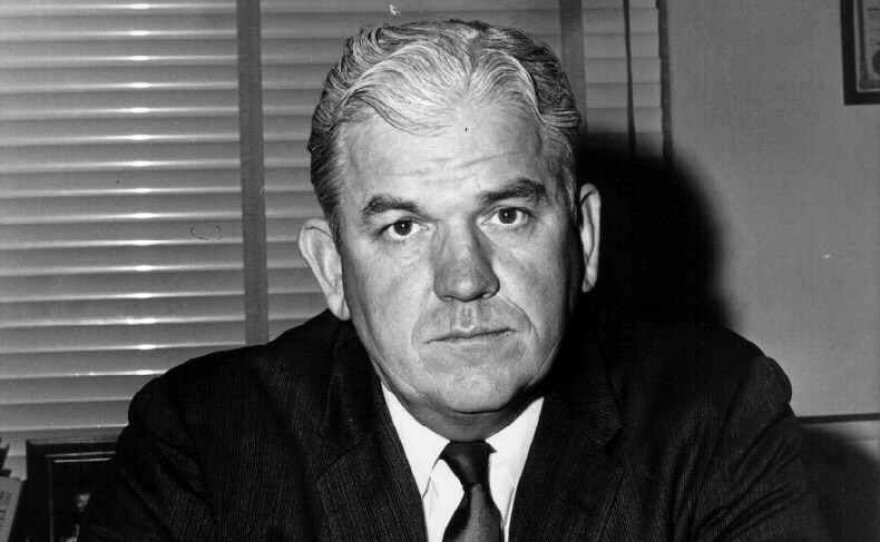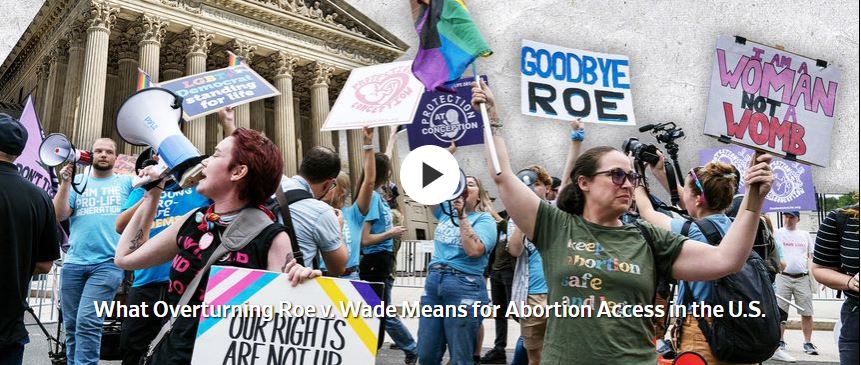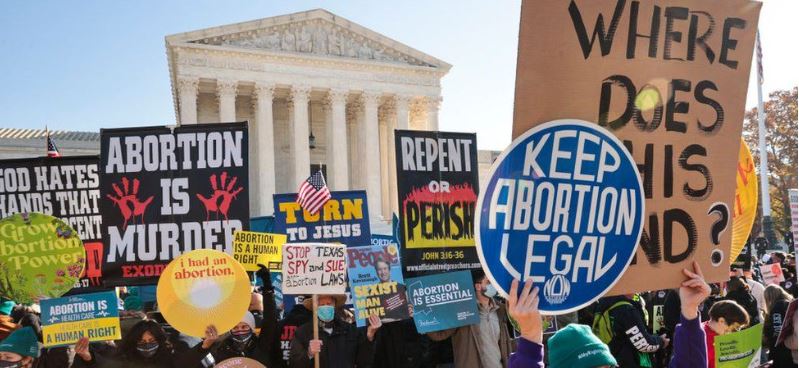Jane Roe And Henry Wade: Who were Roe and Wade in the popular “Roe v. Wade” Supreme Court landmark? Here’s a history, summary, and background.
The Supreme Court on Friday upheld abortion restrictions in Mississippi and eliminated the constitutional right to an abortion that was first established in the 1973 Roe v. Wade decision.
The US Supreme Court has opened the door for individual states to ban or severely restrict the ability of pregnant women to get abortions.
In 1973, the court had ruled in Roe v Wade that pregnant people were entitled to an abortion during the first three months of their pregnancy while allowing for legal restrictions and bans in the second and third trimesters.
Now the court has overturned that earlier ruling, effectively making it possible for states to ban abortions earlier than 12 weeks.
Abortion will not automatically become illegal in the US – but individual states will now be allowed to decide if and how to allow abortions.
In this article, TheVibely will share with you the persons behind the popular landmark “Roe v.Wade”, their story, who they were, and what ensued between them.

Who Was Jane Roe?
In 1969, Norma McCorvey, a Texas woman in her early 20s, sought to terminate an unwanted pregnancy. McCorvey, who had grown up in difficult, impoverished circumstances, previously had given birth twice and given up both children for adoption. At the time of McCorvey’s pregnancy in 1969 abortion was legal in Texas—but only for the purpose of saving a woman’s life.
While American women with the financial means could obtain abortions by traveling to other countries where the procedure was safe and legal or paying a large fee to a U.S. doctor willing to secretly perform an abortion, those options were out of reach to McCorvey and many other women.
As a result, some women resorted to illegal, dangerous, “back-alley” abortions or self-induced abortions. In the 1950s and 1960s, the estimated number of illegal abortions in the United States ranged from 200,000 to 1.2 million per year, according to the Guttmacher Institute.
After trying unsuccessfully to get an illegal abortion, McCorvey was referred to Texas attorneys Linda Coffee and Sarah Weddington, who were interested in challenging anti-abortion laws.
In court documents, McCorvey became known as “Jane Roe.”

Who Was Henry Wade?
Henry Wade known in real life as Henry Menasco Wade was an American lawyer who served as district attorney of Dallas County from 1951 to 1987.
He was born on November 11, 1914, in Rockwall County, Texas, United States. He died on March 1, 2001, in Dallas, Texas, United States.
He was married to Yvonne Hillman from 1948 to 1987. Wade had more children, some of his kids’ names are Kim Wade, Wendy Wade Ballew, Henry M. Junior Wade, Michelle Wade Branderburger Wade, and more.
In 1970, the attorneys filed a lawsuit on behalf of McCorvey and all the other women “who were or might become pregnant and want to consider all options,” against Henry Wade, the district attorney of Dallas County, where McCorvey lived.
Earlier, in 1964, Wade was in the national spotlight when he prosecuted Jack Ruby, who killed Lee Harvey Oswald, the alleged assassin of President John F. Kennedy.

What is Roe v. Wade and why does it matter?
Roe v. Wade is a landmark Supreme Court case from 1973 that determined that the U.S. Constitution protects a woman’s right to an abortion before her fetus is viable, per Cornell Law School.
The case started with a woman named Norma McCorvey, who took on the legal pseudonym “Jane Roe.” McCorvey became pregnant in 1969 with her third child and wanted an abortion. But she lived in Texas, where abortions were illegal except in rare circumstances.
The court ultimately decided that during the first trimester, the decision to terminate a pregnancy was a woman’s choice on the basis that it constituted a woman’s “right to privacy.” And as such, it was unconstitutional to ban women’s access to abortion in individual states.
With this decision from the Supreme Court, states could still “regulate,” but not outlaw abortions in the interest of the mother’s health. Beyond the first trimester, the court ruled that states could regulate or outlaw abortions except when necessary to preserve the life or health of the mother.
With Roe v. Wade overturned, the Supreme Court now puts the decision back into the states’ hands. More on that in a second.
Abortion Before Roe v. Wade
Until the late 19th century, abortion was legal in the United States before “quickening,” the point at which a woman could first feel movements of the fetus, typically around the fourth month of pregnancy.
Some of the early regulations related to abortion were enacted in the 1820s and 1830s and dealt with the sale of dangerous drugs that women used to induce abortions. Despite these regulations and the fact that the drugs sometimes proved fatal to women, they continued to be advertised and sold.
In the late 1850s, the newly established American Medical Association began calling for the criminalization of abortion, partly in an effort to eliminate doctors’ competitors such as midwives and homeopaths.
Additionally, some nativists, alarmed by the country’s growing population of immigrants, were anti-abortion because they feared declining birth rates among white, American-born, Protestant women.
In 1869, the Catholic Church banned abortion at any stage of pregnancy, while in 1873, Congress passed the Comstock law, which made it illegal to distribute contraceptives and abortion-inducing drugs through the U.S. mail. By the 1880s, abortion was outlawed across most of the country.
During the 1960s, during the women’s rights movement, court cases involving contraceptives laid the groundwork for Roe v. Wade.
In 1965, the U.S. Supreme Court struck down a law banning the distribution of birth control to married couples, ruling that the law violated their implied right to privacy under the U.S. Constitution. And in 1972, the Supreme Court struck down a law prohibiting the distribution of contraceptives to unmarried adults.
Meanwhile, in 1970, Hawaii became the first state to legalize abortion, although the law only applied to the state’s residents. That same year, New York legalized abortion, with no residency requirement. By the time of Roe v. Wade in 1973, abortion was also legally available in Alaska and Washington.
Legacy of Roe v. Wade
Norma McCorvey maintained a low profile following the court’s decision, but in the 1980s she was active in the abortion rights movement.
However, in the mid-1990s, after becoming friends with the head of an anti-abortion group and converting to Catholicism, she turned into a vocal opponent of the procedure.
Since Roe v. Wade, many states imposed restrictions that weaken abortion rights, and Americans remain divided over support for a woman’s right to choose an abortion.
In 1992, litigation against Pennsylvania’s Abortion Control Act reached the Supreme Court in a case called Planned Parenthood of Southeastern Pennsylvania v. Casey. The court upheld the central ruling in Roe v. Wade but allowed states to pass more abortion restrictions as long as they did not pose an “undue burden.”

Supreme Court Ruling
In June 1970, a Texas district court ruled that the state’s abortion ban was illegal because it violated a constitutional right to privacy. Afterward, Wade declared he’d continue to prosecute doctors who performed abortions.
The case eventually was appealed to the U.S. Supreme Court. Meanwhile, McCovey gave birth and put the child up for adoption.
On Jan 22, 1973, the Supreme Court, in a 7-2 decision, struck down the Texas law banning abortion, effectively legalizing the procedure nationwide. In a majority opinion written by Justice Harry Blackmun, the court declared that a woman’s right to an abortion was implicit in the right to privacy protected by the 14th Amendment.
The court divided pregnancy into three trimesters and declared that the choice to end a pregnancy in the first trimester was solely up to the woman. In the second trimester, the government could regulate abortion, although not ban it, in order to protect the mother’s health.
In the third trimester, the state could prohibit abortion to protect a fetus that could survive on its own outside the womb, except when a woman’s health was in danger.
Roe v. Wade Overturned
In 2022, the nation’s highest court deliberated on Dobbs v. Jackson Women’s Health Organization, which regarded the constitutionality of a Mississippi law banning most abortions after 15 weeks of pregnancy. Lower courts had ruled the law was unconstitutional under Roe v. Wade. Under Roe, states had been prohibited from banning abortions before around 23 weeks—when a fetus is considered able to survive outside a woman’s womb.
In its decision, the Supreme Court ruled 6-3 in favor of Mississippi’s law—and overturned Roe after its nearly 50 years as precedent.







